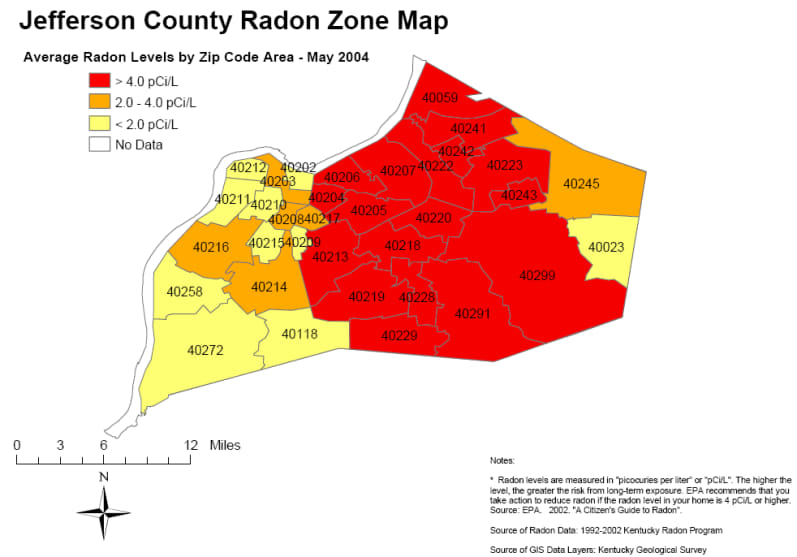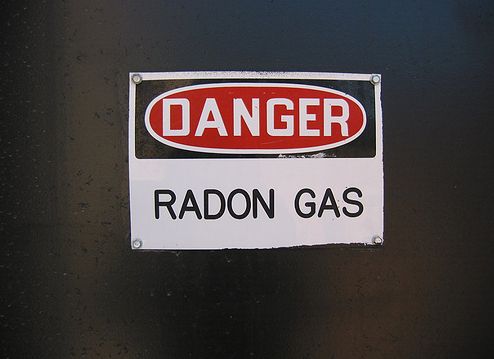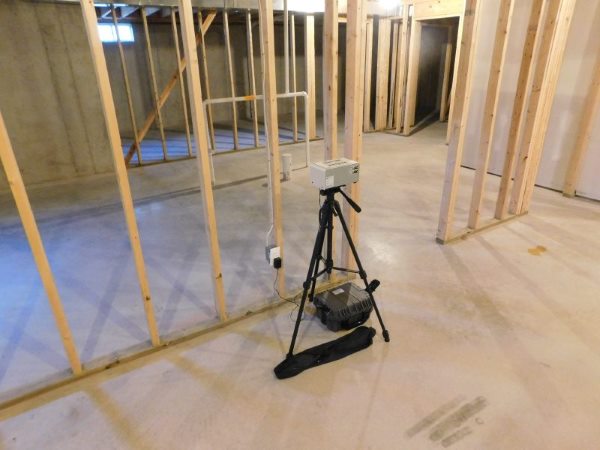Should you test for Radon Gas in Louisville?
At least a few times a week I ask a client if they want a Radon test performed on their new house. Most give a sharp “yes” without hesitation. Some folks, however, don’t know what to say, or maybe confused from all the different opinions they have gotten from their realtor, dad, cousin, neighbor, etc… Let’s see if we can clear things up a bit.
If you are buying a home in Louisville (all of KY really) you should have it tested for Radon Gas. Every home should be tested for Radon gas. No exceptions; especially in homes that already have a Radon mitigation system installed in the home. We’ll get into the “why?” of that in more detail later.
There are only two types of houses that don’t have some form of Radon Gas around here. Houseboats and treehouses. Unless your house falls in one of those categories, you need to get it tested. Here is an EPA map of Jefferson County KY. Notice how nearly every part of the county is in the red; Zone-1.

WHAT IS RADON GAS?
Radon is an odorless, colorless, radioactive gas that comes from the earth. It forms naturally from the decay of radioactive elements in the ground, such as uranium. Some locations have much higher levels of these elements than others. This is why some areas have high levels of Radon gas, and others only have trace amounts. We just happen to have drawn the short straw here in Louisville and have some of the highest amounts found in the U.S.
Radon is found both indoors and outdoors. Outdoor levels are typically very low, while the measurements in indoor buildings can range from very low to extremely high. As the Radon breaks down in the ground, it seeps in through the cracks and holes in the foundation of your home. If enough Radon gas makes it through, the house will test high for Radon.
HOW TO TEST FOR RADON IN YOUR HOME
There are several different ways to test for Radon, but the easiest way is to have a CRM (continuous radon monitor) placed in the home for several days.
EPA (Environmental Protection Agency) testing protocol says the machine should be left undisturbed in the home for a minimum of 48 hours, up to 7 days. Placement of the CRM is always on the “lowest potential living space.” This means if you have an unfinished basement, but may one day finish it out, you run the test from that area.
If the home has a crawlspace or concrete slab (since no one will ever live under the house) the CRM monitor is placed as close to the center of the house as possible on the first floor. You also want to keep the machine away from exterior doors and windows (that is to simply keep as much fresh air away from it as possible, which can dilute the radon gas and affect the test).
Once the machine is in place and running the test, it will take an air sample once an hour, every hour, until the test has been stopped. Those numbers are then averaged to give you your test results in picocuries per liter or pCi/L.
THE HOUSE DOESN’T HAVE A BASEMENT, DO I REALLY NEED A RADON TEST?
Yes, you do. A home is not required to have a basement to have high levels of Radon gas. Somehow, a nasty lie got started years ago that a home that was built on a concrete slab, or a crawlspace “won’t have Radon, only houses with basement do.”
This is 100% completely false.
Some of the highest numbers I’ve ever seen came from homes that were built on slabs and crawlspaces. I’ve also heard it said that walkout basements don’t have Radon. Again, this is simply not true. There is no building style that is Radon proof, or Radon resistant. All homes have the potential for elevated Radon gas, so all homes need to be tested.
THE HOUSE ALREADY HAS A MITIGATION SYSTEM INSTALLED, WHY WASTE THE MONEY ON A TEST?
I hear this all the time, and the answer is quite simple. There are lots of systems that don’t work properly. More than you would think.
Oh, they’re in place, and the fan is running, yet the Radon levels are still elevated when I test the home. That is because anyone with a truck, a cheap fan, and some PVC pipe can call themselves a Radon mitigation company.
There are no laws or rules currently enforced in Kentucky for Radon mitigators; it’s the “Wild West,” and it shows in the quality of work that I see.
Look at it like this. If a home has a mitigation system, that means the levels were once high enough to warrant the install, to begin with. It is in your best interest to double-check to see that the system is working properly, and is actually lowering the Radon gas levels.
Over the course of the past year, I tracked my data on testing Radon in houses where Mitigation systems were already installed. My results: One in every five systems was not working properly. In several homes, the mitigation fans didn’t work at all.
TEST COMPLETED. NOW WHAT? EPA VS WHO
Now that you have your numbers, let us talk about what all this means, and what you need to do next.
There are two sources that folks look to for guidance when it comes to Radon gas and their home. The EPA (Environmental Protection Agency) and the WHO (World Health Organization). The EPA says that homes with 4.0pCi/L or more should have a Radon mitigation system installed in the home. However, in 2009 the WHO released a study that stated they are lowering their recommended action level to 2.7pCi/L.
Most people in the real estate world won’t tell you about the newer WHO study though.
Sometimes it’s just plain ignorance (you’d be shocked at the number of people I run into every week that have never heard of the WHO), but other times it’s just not convenient to the transaction at hand. You see, lots of homes fall in between the 2.7 and 3.9 levels, and when home buyers want the sellers to foot the bill for a Radon mitigation system, well, the higher the action level numbers are, the better…. for the transaction.
So who’s right? Which organization do you listen to; who do you go by? I don’t know. In fact, I don’t know if there is a right answer.
In my mind, it is simply not worth the risk. Radon mitigation systems are not extremely difficult, or expensive to install.
MITIGATING THE PROBLEM
So you’ve had your Radon test completed, and the home came back elevated. It’s time to get a Radon mitigation system installed. Radon mitigation systems are simple creatures by nature, but not just any jack-leg can install them (although they try).
Just like choosing your home inspector, you need to be picky and smart about who you choose to install your Radon mitigation system. I’ll get into mitigation systems, and what problems can come up from them in a later post.
Louisville KY Radon Levels by Neighborhoods
I tracked all my Radon tests for 5 years and compiled the data to see what areas of Louisville could be more of a risk for high levels of Radon.
The data will surprise you.






I didn’t understand exactly what Radon gas was until I read through your article. It’s interesting how a single gas can creep into the foundation of the home and cause damage. I’ll make sure to get a radon gas before I buy my next home in Connecticut in the summer. I’ll also looking to testing my radon mitigation system in order to see if it works correctly.
Thanks for helping me understand that the radon mitigation system is used to keep it from coming back, and it must be installed by a professional. With that in mind, I will contact a professional to have this done since we might have this problem. It’s because the house that I will move into is quite old, but I bought it just to make my kids comfortable since it is near the lake.
I purchased Radon Eye. It provides graphs and data files, and allows monitoring over weather patterns and different rooms in the house. Here is an example of a data file where I added graphs in a spreadsheet (and didn’t annotate … not sure what this represents at this point)